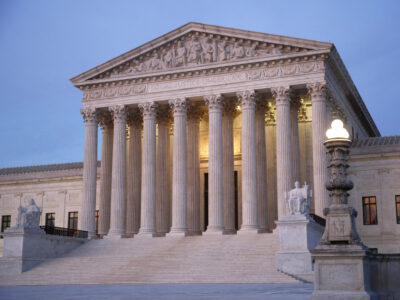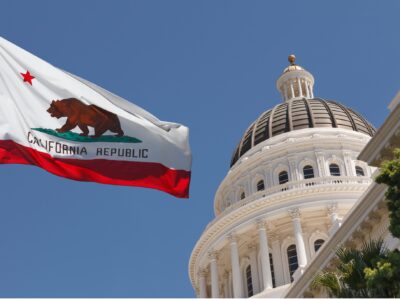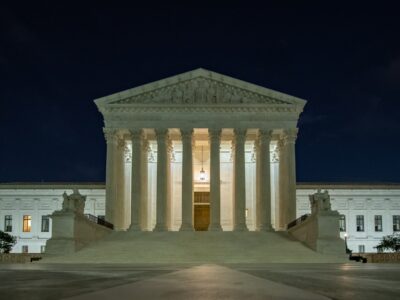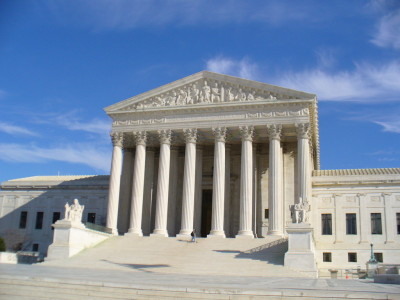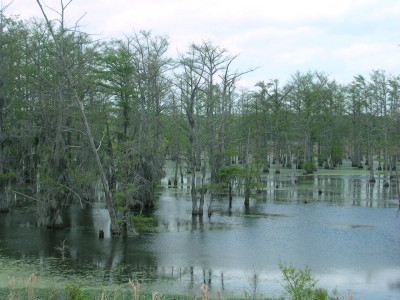U.S. Supreme Court
Judicial Review After Loper Bright
We used to have the Chevron test? What test do we have now?
Loper Bright has created a new two-part test for courts to apply when an agency has interpreted a statute. It’s not the same as Chevron, but it does have some family resemblance.
CONTINUE READINGIs the Sky Falling? Chevron, Loper Bright, and Judicial Deference
Perplexed? Worried? Here’s a guide to a fraught area of law.
If you’re confused about the Supreme Court’s ruling, you’re not alone. Scholars will be discussing the recent ruling for years. It clearly will limit the leeway that agencies have to interpret statutes, meaning less flexibility to deal with new problems. But unlike many commentators, I don’t think the sky is falling. I was teaching environmental …
Continue reading “Is the Sky Falling? Chevron, Loper Bright, and Judicial Deference”
CONTINUE READINGLosing Chevron: What Does It Mean for California?
The Supreme Court’s decision in Loper Bright will not necessarily impact how California courts review our state agency determinations. But we’ll feel it in other ways.
A question I’ve been getting a lot since the Supreme Court overturned the Chevron doctrine is: “What does this decision mean for California?” Here are three takeaways about how the Golden State is likely—or not—to be impacted at first blush. First, the decision does have the potential to impact California directly in some pending litigation. …
Continue reading “Losing Chevron: What Does It Mean for California?”
CONTINUE READINGIs Loper v. Raimondo Really the Power Grab Commentators Assume?
The Supreme Court has already grabbed power from agencies through the major questions doctrine.
Headlines about today’s decision in Loper v Raimondo overturning the 40 year-old decision in Chevron v NRDC that granted agencies deference in their interpretation of ambiguous statutes focus on the “massive power grab,” the decision’s “sweeping” nature and call it a “blow” to the administrative state. My view may be idiosyncratic but I don’t view …
Continue reading “Is Loper v. Raimondo Really the Power Grab Commentators Assume?”
CONTINUE READINGThe Supreme Court & Interstate Pollution
It was puzzling that the Court agreed to hear the case. How has it ruled? And why?
Months ago, the Supreme Court agreed to hear an “emergency” request to stay EPA’s new rule regulating interstate air pollution. Like most observers, I was puzzled that the Court was bothering with the case before the D.C. Circuit even had a chance to consider the merits of the challenges. Months later, the Court has finally …
Continue reading “The Supreme Court & Interstate Pollution”
CONTINUE READINGThe 2023 NEPA Rewrite and the Supreme Court’s New Climate Case
NEPA isn’t a common law subject. What the statute says matters more than pre-2023 judicial opinions.
When it amended NEPA in 2023, Congress squarely rejected language that would have constricted the definition of environmental impacts. The Supreme Court needs to give that language full effect, not obsess about the meaning of pre-2023 judicial opinions.The Supreme Court shouldn’t give advocates of narrowing NEPA a victory that they were unable to get through the legislative process.
CONTINUE READINGHillary Clinton, Climate Change, and the ‘Sliding Doors’ of History
Here’s what could have happened instead of Trump’s crusade against climate action, if Clinton had squeaked out a victory in 2016.
If Hillary Clinton had won, we would be much further along today in the battle to cut carbon emissions and control climate change. Instead, Trump was a climate disaster. The bottom line: Elections do matter. Not just for politicians but for all of us.
CONTINUE READINGBig Oil Runs to the Supreme Court
Oil and gas companies want the justices to take up Honolulu’s climate liability case because this type of litigation is starting to gain strength.
The oil industry and its allies are attempting a full-court press to convince the Supreme Court justices they should shield them from climate liability lawsuits brought by cities and states throughout the U.S—and that they should do so now, before they face any court trials over climate-related damages. This unusual full-court press comes in the …
Continue reading “Big Oil Runs to the Supreme Court”
CONTINUE READINGThe Supreme Court’s Top-10 Environmental Law Decisions
If these decisions had come out differently, environmental law would look very different than it does today.
Here’s what you really need to know about the Supreme Court’s rulings on environmental law — including its recent trend toward weakening environmental protection.
CONTINUE READINGTemporary Takings and the Adaptation Dilemma
Current law penalizes adaptation measures because of the risk of takings liability.
Is it unconstitutional for the government to build a levee that reduces the risk of urban flooding but diverts the water to nearby farmlands? The answer could be yes, unless the government pays for flood easements on the rural lands. But if the government doesn’t build the levee, it faces no liability from the urban …
Continue reading “Temporary Takings and the Adaptation Dilemma”
CONTINUE READING



